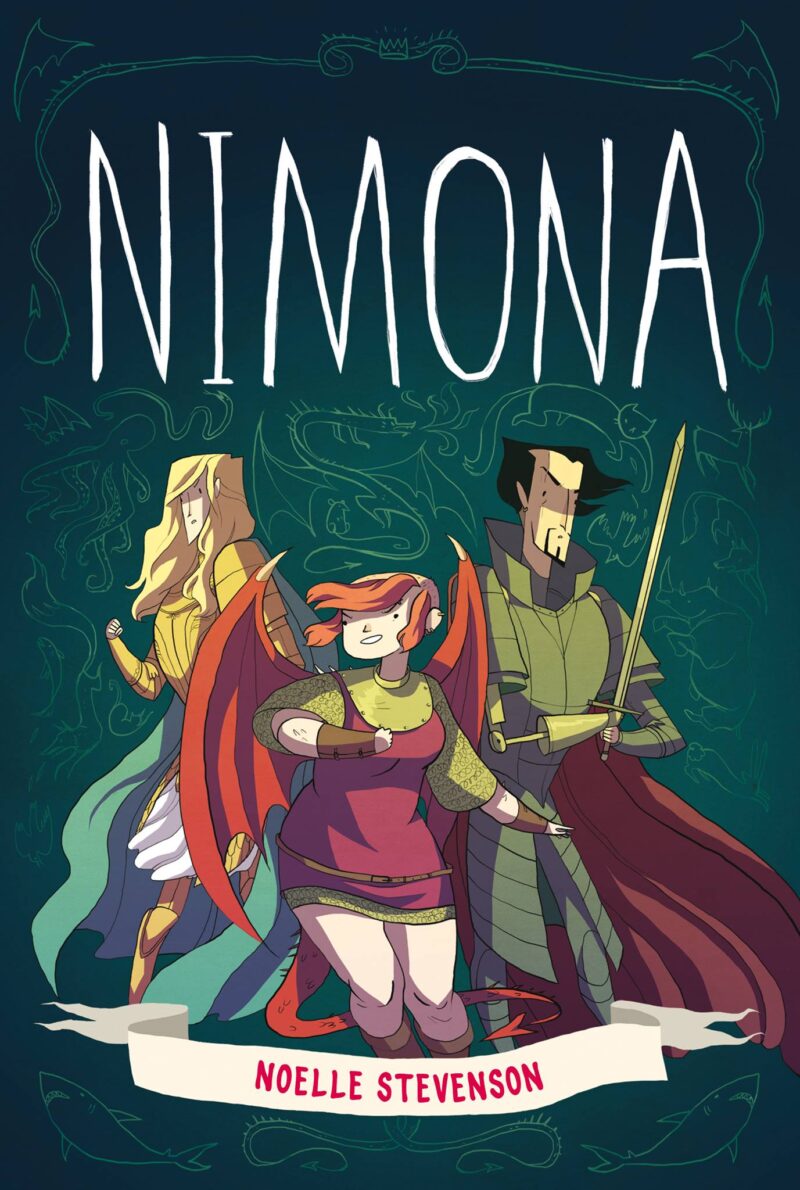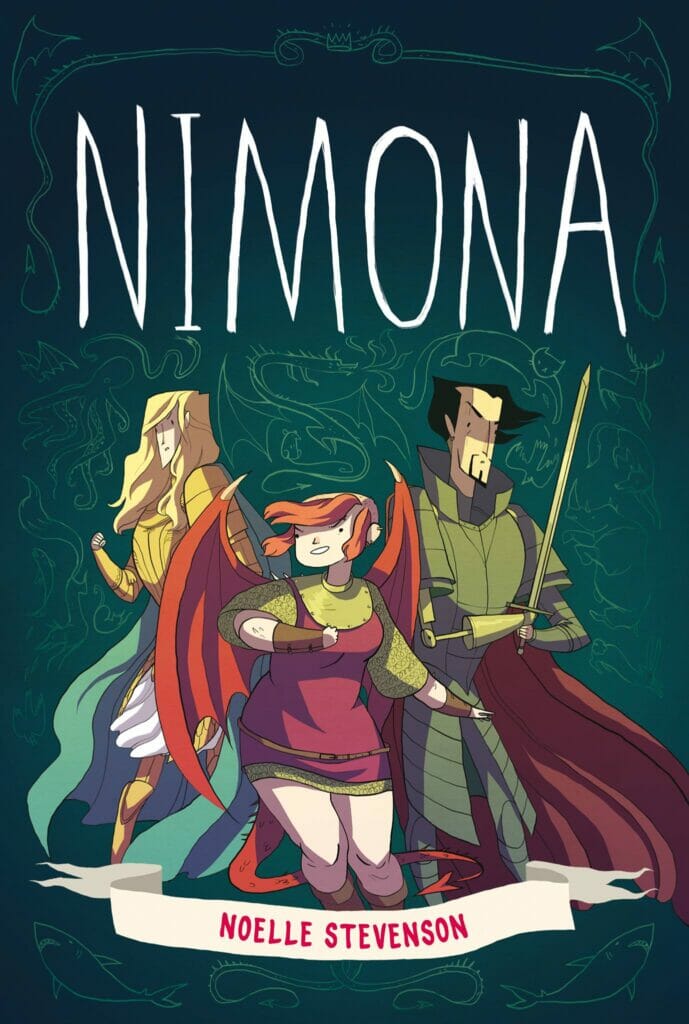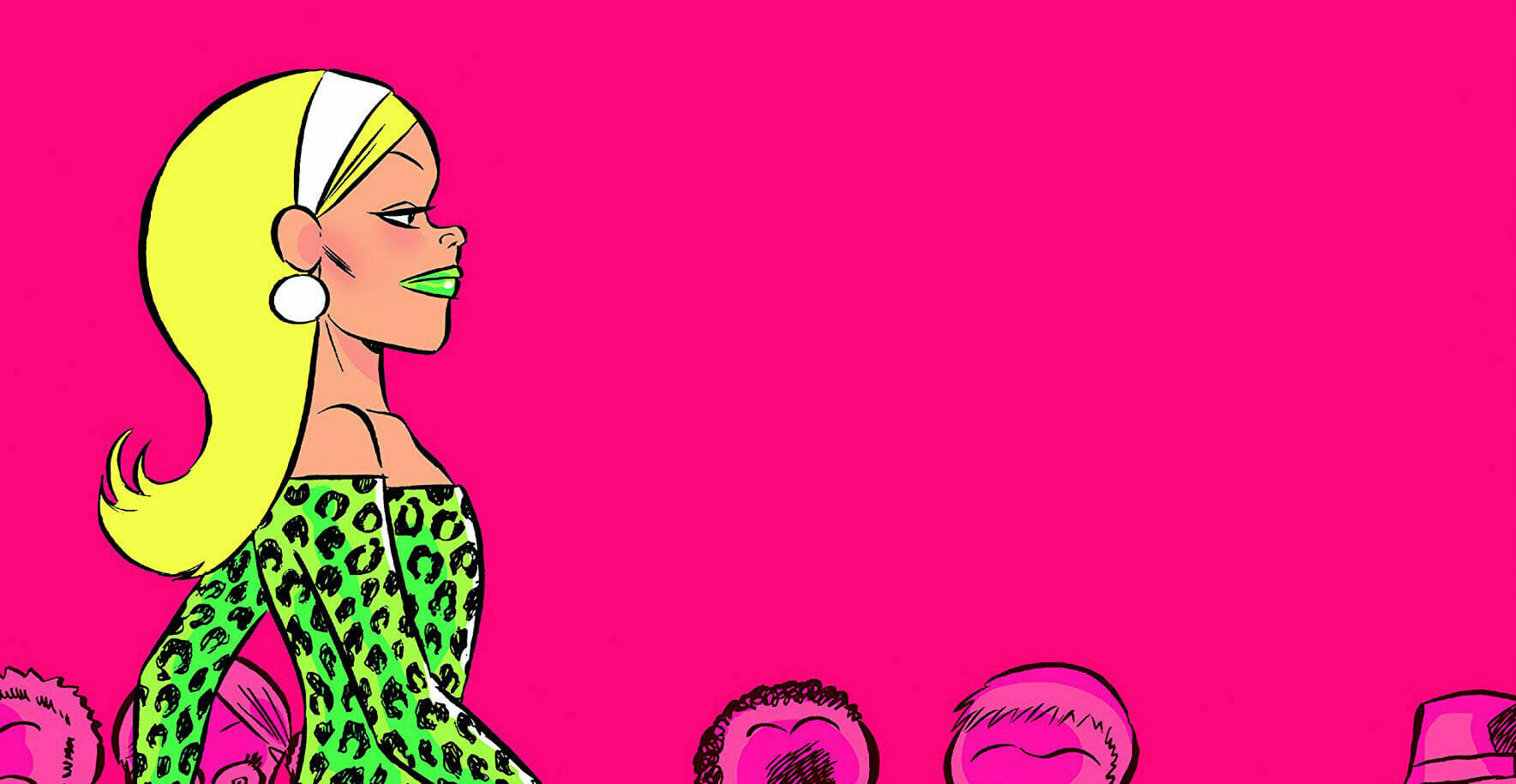
Nimona | An ode to monster girls in a graphic novel
Author
Year
Format
Nimona is chaotic, unstable, and prone to evil actions. Her shapeshifting abilities make her hard to catch, harder to understand, and even unlovable. And yet, since Nimona initially debuted in a Tumblr webcomic in 2012 by ND Stevenson, she proved to be a very relatable character, especially for whoever feels “different”.
The redemption of villains in queer media
Nimona and Ballister are two different kinds of villains. One embraces chaos with everything that comes with it, and the other believes in rules and containing the damage. But the reason why they find themselves in that role is the same: they felt like they had no choice.
Nimona was born a monster and thus had no chance of blending in. Society would force her to detach from her shapeshifting identity, which she simply could not do. Ballister was a hero until an accident caused him to lose his arm. As a disabled man, society had no use for him anymore, casting him to the outskirts. Despite his good nature, he had no choice but to resort to evil.
With this theme, Stevenson intercepts a popular motive in recent media: the understanding of villains. Not to see them move to the good side, but rather to understand their reasons. The LGBTQ+ community especially empathizes with villains because they relate to their feeling of being abnormal, unwanted, and cast aside. The wish is for them to either get their revenge or finally be understood and accepted. We see this trend in the Loki series, in the book and TV show Good Omens, and in the animated series She-Ra and the Princesses of Power, developed by ND Stevenson himself.
Through Nimona, Stevenson chose to explore the idea through a more feminist lens. “Like a lot of young women, I went through an entire period where I hated female characters. […] I want to figure out why I think that way, and why a male character could be celebrated for negative traits while a [female character] is crucified for those same traits”, he told NPR.

The metaphor of the metamorphosis in Nimona
Nimona often chooses the form of a masculine girl, but it is not her only form. As a shapeshifter, she can be an animal, a legendary creature, or another person entirely. In the comic itself, Nimona takes the form of many male characters, which is important to Stevenson. As a non-binary person, the theme of not fitting into one mold is very close to the comic author’s heart. Nimona may choose to present as a girl, but she is not a girl; just like Stevenson chooses to present as a man most of the time, but is not a man.
Nimona’s shapeshifting abilities are a metaphor for a gender identity crisis. She is at her best when she transforms, feeling “not as complete” when she is forced to remain stuck in one form. Molly Clare Barnewitz‘s thesis on the metaphor of transformation explains in depth how Nimona becomes more of a danger when she is forced to act “normal”. When in the comic book her being is separated – the shapeshifting “monster” on one side, the human on the other – she becomes unstable. The human part becomes weaker, while the shapeshifter becomes unhinged. Only when reuniting the two parts, Nimona can keep both her sides healthy and under control.
Her friend and boss Ballister finds his existence could adhere to the same metaphorical interpretation. The loss of his arm is not a problem per se, as he is still the same person he was. The true issue is the way society treats him, imposing a role on him and treating him as “less human” just like they treat Nimona as a monster.
Road to Nimona: from webcomic to animated movie
The idea for Nimona originates in Stevenson’s youth: in high school, to be precise. She was already a shapeshifter, but she missed her most fundamental characteristics. During his time at the Maryland Institute College of Art, that character returned to him. “She came back into my head,” he tells The Washington Post. “I combined the concept with this Joan of Arc-inspired character I was drawing at the time, and voila, Nimona as we know her was born.”
In summer 2012 Stevenson decided to turn his idea into a webcomic. He started posting pages on Tumblr. Not much time passed before a literary agent reached out to him: then, in 2015, the graphic novel was published. Stevenson managed to get Nimona approved as his thesis, so he could keep working on it while advancing his school career. The latest accomplishment for ND Stevenson was the release of Nimona as an animated movie on Netflix in 2023, which allowed for a rediscovery of his graphic novel.
Tag
Buy a ☕ for Hypercritic









